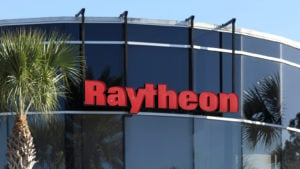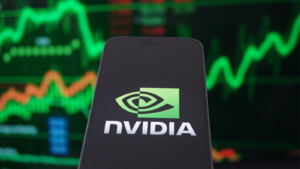The U.S. economy saw rapid growth in robotics and automation across sectors. Companies continue to invest heavily, anticipating improved quality and efficiency. Retail and consumer goods have led this wave, with significant capital investments in most major companies already planned for the next five years. Despite challenges like high upfront costs, robotics promise a resilient industrial landscape. For those bullish on on-shoring trends, that’s a great thing.
The global robotics market is projected to hit $95.93 billion by 2029, fueling confidence in the top three robotics stocks to buy. Market Research Future predicts it will exceed $286 billion by 2032, driven by AI technologies like natural language processing and machine learning. Investors should explore the companies driving this transformative industry.
Intuitive Surgical (ISRG)

With a worth of $134 billion as a medtech company focusing on advanced surgical robotics, Intuitive Surgical (NASDAQ:ISRG) is first on the list. After a slight dip, its stock fell nearly 7%, but with da Vinci surgeries rebounding in China, there’s potential for higher highs. Despite fluctuations, the recent clearance of its fifth-generation robot and ongoing international expansion indicate strong forward growth prospects.
Intuitive Surgical’s EVP and Chief Digital Officer Brian Miller recently expressed that the data from the new da Vinci 5 surgical robotics system will revolutionize patient care. Miller highlighted the DV5 as Intuitive’s most precise robot, with enhanced sensors and motors. He also highlighted how data can help characterize procedures and improve patient outcomes.
In Q1 2024, Intuitive exceeded earnings expectations and announced $1.50 per share. Sales came in at $1.89 billion. Earnings and sales saw a 53% and 11.5% increase, respectively. Additionally, procedures using its da Vinci systems grew by 16%, beating forecasts, with a compound annual growth rate of 17%. All these numbers make ISRG stock a compelling option to buy right now.
RTX (RTX)

RTX (NYSE:RTX), formerly Raytheon, offers aerospace and defense solutions, potentially benefiting from Middle East tensions. Analysts rate RTX stock as a Hold with a $104.33 target, but this may change with geopolitical shifts. With a 2.32% yield and $5.38 in earnings per share forecasted, RTX has emerged as a blue-chip dividend stock given the recent and increasing geopolitical uncertainty.
RTX faced declining profit margins in two of its main businesses. Most notably, its Pratt & Whitney segment dropped 6.4% year-over-year. Despite last year’s earnings of $2.23 per share, RTX anticipates a rebound to at least $5.25 per share this year, doubling its previous performance.
Analysts also predict a significant margin increase at both Collins and Pratt, especially as issues with Pratt & Whitney engines have peaked and should improve throughout the year. Although RTX’s stock has risen about 50% from its October 2023 lows, trading at 40x earnings and 2x sales, it’s no longer considered cheap. Wells Fargo’s (NYSE:WFC) Matthew Akers reduced RTX’s price target by $1 to $119, maintaining an Overweight rating.
Nvidia (NVDA)

As the top semiconductor company in the world, Nvidia (NASDAQ:NVDA) is known for its excellent AI chips and blockchain technology, but these chips have also been integrated into robotics. GPUs are crucial for robotics, as they create future AI applications. Investors are always confident about Nvidia and its role in the AI revolution, driving a 126% increase in revenue.
The company also introduced the “Nvidia Inference Microservice” revenue-generating software for its enterprise software subscription. The company aims to transition from a microchip provider to a platform provider. In fact, it announced a $200 million AI center construction plan in Indonesia to expand further in Asia.
In its most recent earnings report, Nvidia aced its numbers, showing a 265% increase in sales and 769% in growth year-over-year. Guidance was also impeccable, giving investors more reasons to stay optimistic about the AI company. Nvidia’s unveiling of its Blackwell series of AI microchips in March further boosted enthusiasm for its stock.
On the date of publication, Chris MacDonald did not hold (either directly or indirectly) any positions in the securities mentioned in this article. The opinions expressed in this article are those of the writer, subject to the InvestorPlace.com Publishing Guidelines.
Chris MacDonald’s love for investing led him to pursue an MBA in Finance and take on a number of management roles in corporate finance and venture capital over the past 15 years. His experience as a financial analyst in the past, coupled with his fervor for finding undervalued growth opportunities, contribute to his conservative, long-term investing perspective.
